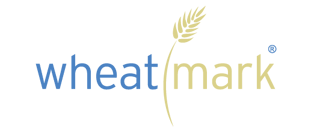One of the drums that we hit constantly around Wheatmark is the “you need professional editing” tom.
Wheatmark offers several different levels of editing for authors. We also have an editorial analysis that will determine what level of editing you really need.
The differences between the editing options can be confusing. In order to better understand them, let’s use a high-end department store as a parallel.
Developmental Editing
The most in-depth level of editing is the developmental edit. Think of the developmental edit as a personal shopper service some department stores offer. The client hires the personal shopper-who keeps track of every season’s best looks-to provide incredible personal service and say, this is what looks good on you and here is your size.
A developmental edit does the same thing. During the developmental edit, a content editor makes comments and suggestions to help the author develop the content of their manuscript. Not a light undertaking, the developmental edit requires several passes, revisions by the author, more content editing, and finally one last copy edit before it goes to layout.
Heavy Copyediting
The next most in-depth level of editing is the heavy copy edit. The heavy copy edit is like a swanky shoe department. It turns a keen eye to organization, sentence structure, grammar, spelling, punctuation, and a myriad of other style issues. Like the shoe department, there are a lot of styles to look at and the salespeople in the shoe department know their inventory the best. They also can suggest fashions that will look good with your footwear choices and make recommendations about which shoes you might prefer based on your current wardrobe.
That level of attention is what you get with the heavy copy edit: gold star service that doesn’t try to restyle you from the ground up, but instead offers you ways to enhance your story.
Medium Copyediting
This is the straightforward copy edit. An editor will check your grammar, spelling, punctuation, and style, and occasionally make adjustments to your sentences. This is like shopping in the men’s or women’s activewear departments. Mostly you get attentive salespeople who will help you find colors and sizes, but don’t get too involved with your personal wardrobe selections.
A medium copy edit will not include in-depth commentary and suggestions. An editor might provide a few comments here and there, but overall they will be putting the final polish on your manuscript without interfering with your story ideas. Just like clothing salespeople, they won’t talk you out of the hideous silk-blend golf shirt with puppies on it that you are buying as a Father’s Day present. They’ll just help you find your dad’s size.
Light Copyediting
The last level of copyediting to talk about today is the light copy edit. For starters, light copyediting is only available to manuscripts that have been designated acceptable for that service through the Editorial Analysis. In terms of detail, the light copy edit is akin to shopping on the department store’s website-you get mostly the same items as in the store, but because you don’t need as much attention, you can easily buy online. The light copy edit offers all the same services as the regular copy edit, but the work will not be as extensive because your manuscript is fairly clean.
Interested in getting started with an Editorial Analysis? Just fill out the Project Assessment Form about your book to get started.
